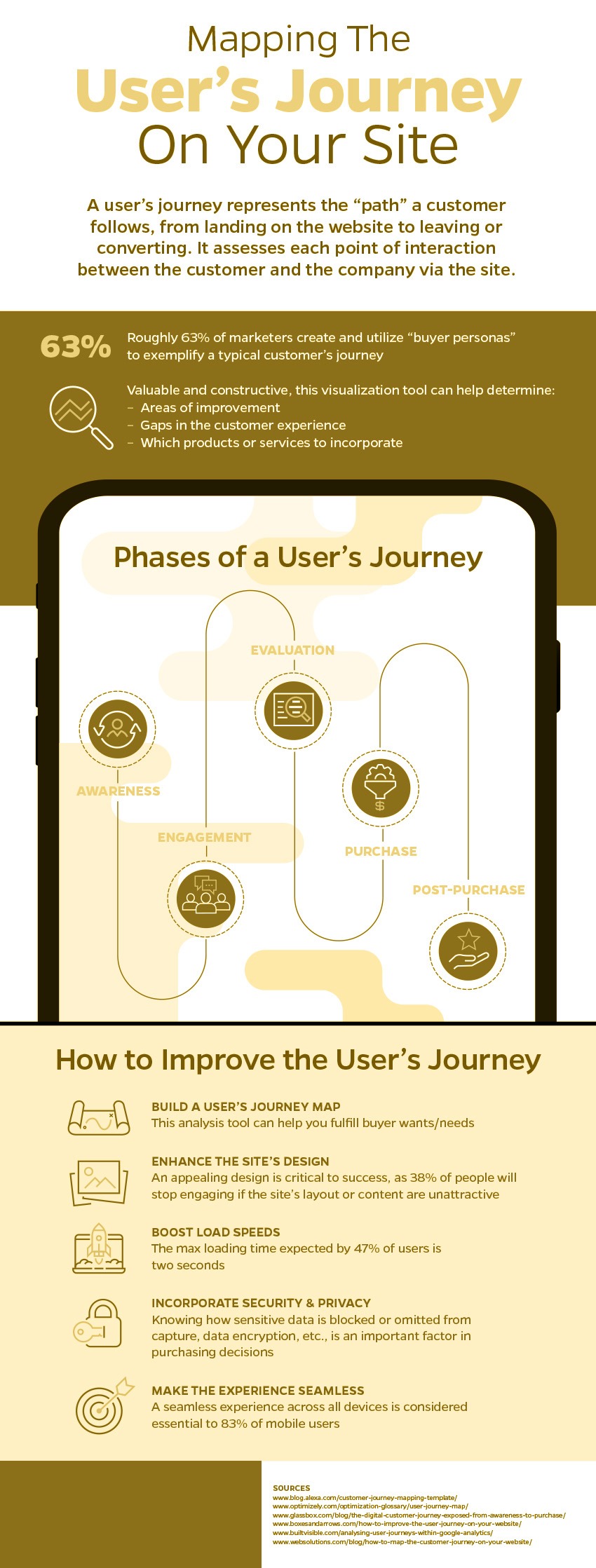In today’s fast-paced e-commerce landscape, every moment a customer spends on your website is crucial. As consumers quickly move on to the next thing, it is essential to take every feasible step to enhance the customer experience and make the site more appealing. To achieve this, it is necessary to closely examine the user journey, map it out, and make improvements wherever possible. To help with this process, let’s briefly explore user journey mapping and some tips to enhance the user’s journey on your website.
What is the E-Commerce user journey?
The e-commerce user journey is the path that a customer takes when interacting with an online store or website to purchase a product or service. It typically starts with the customer discovering the online store through various marketing channels, such as social media, search engines, or email marketing. Once the customer lands on the online store, they start browsing products, adding items to their cart, and eventually checking out and making a purchase.
Throughout this process, there are several touchpoints where the customer interacts with the online store, including the website’s homepage, product pages, checkout page, and post-purchase follow-up. Each of these touchpoints plays a crucial role in the customer’s overall experience and satisfaction with the online store.
To create a successful e-commerce user journey, it’s important to understand your target customers’ needs and preferences and create a website that caters to their specific needs.
What is a user journey map?
A user journey map is a diagram that visually illustrates the path, or user flow, through your site. It starts with the discovery or initial contact, then continues through the process of engagement and ends in either conversion or departure. The map works to identify key touch points and user interactions with the site or mobile app.
How to improve the user journey on your e-commerce site
There are many ways to improve the user journey on your e-commerce site. Here are a few tips:
- Boost load speeds. Every second counts, and users nowadays expect almost immediate site access. Make sure your site loads quickly, especially on mobile devices.
- Optimize for mobile access. Consumers want fast, seamless shopping experiences across all their devices. Make sure your site and app are optimized for mobile use.
- Create a visually appealing landing page. The landing page is the first thing users see when they visit your site, so make sure it’s well-designed and visually appealing.
- Use clear and concise language. Users should be able to easily understand what your site is about and what you offer. Avoid using jargon or technical language.
- Make it easy to find what they’re looking for. Users should be able to find what they’re looking for quickly and easily. Use clear navigation and search functionality.
- Offer a variety of payment options. Not all users want to pay with the same method. Offer a variety of payment options, such as credit cards, PayPal, and Apple Pay.
- Provide excellent customer service. If users have any problems, they should be able to get help quickly and easily. Offer live chat, phone support, or email support







